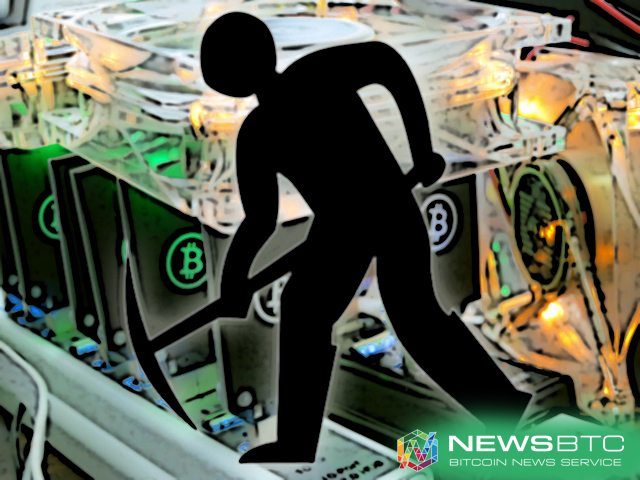Bitcoin has taken the world by storm. Designed to be an instrument for peer-to-peer fund transfer, bitcoin gains its popularity due to its decentralized and open source nature. Unlike other fiat currencies, bitcoin doesn’t need a central authority like a bank or some other government or a private institution to facilitate the transaction of funds from one person to another.
The Bitcoin network has a large number of people sharing processing power and facilitating the digital currency transactions. These people are known as miners and the process Bitcoin Mining. Bitcoin mining is a vital aspect of the Bitcoin protocol, without miners, the network cannot possibly exist.
Bitcoin has been around since 2009, about a year after Satoshi Nakamoto published a paper about the digital currency. In spite of fewer than 8 years of experience, Bitcoin already has a rich history which is worth understanding. In order to get a complete picture of its history, it is important to know about Bitcoin mining and its progression through time.
What is Bitcoin Mining?
The official Bitcoin website describes Bitcoin Mining as a process of adding transactions to Bitcoin’s public ledger, which is known as blockchain. Now, blockchain is a distributed ledger and it contains records of all the transactions that has ever taken place over the network. Whenever somebody makes a bitcoin transaction, these miners verify the transaction against the existing records to confirm its validity. By confirming its validity, miners ensure that no bitcoin is double spent (bitcoin once spent can’t be spent again).
In order to prevent anyone from making changes to the records, blockchain is heavily encrypted and the miners use the processing power to decrypt the transaction records and the blocks to confirm its status. The mining hardware contributing the processing power solves complex cryptographic equations to identify and add new blocks to the blockchain on which the latest transaction data is stored. Miners, in turn, receive rewards in the form of freshly created bitcoin for every new block they discover. These fresh coins are given to them as an incentive for contributing to the network.
One can easily find a lot of essays on the internet explaining Bitcoin and the whole mining process in detail. Some of the best essays and papers on the subject have originated from Write My Essays, a custom writing service which many students and researchers seem to use for professional quality of work.
Bitcoin Mining History
Now, with a basic understanding of Bitcoin Mining, we can look into how Bitcoin Mining has evolved in the past 7 years. In the initial days, Bitcoin mining involved solving cryptographic problems of lower difficulty levels which could be handled by a regular CPU of a personal computer. However, as the number of people and transactions increased over the network, the processing power required for mining also started to increase. Bitcoin Miners graduated from CPU Mining to GPU mining as the GPUs are much more powerful compared to CPUs.
The Bitcoin network is designed in such a way that the difficulty levels of the cryptographic problems increase at regular intervals. Also, whenever the network detects an increase in processing capacity of the miners, the same happens to maintain the block generation constant at 1 block every 10 minutes. From Moore’s law, we already know that the processors are bound to become more powerful and efficient over time, which led to the development of dedicated devices for mining. These devices are called Bitcoin Miners.
FPGA Miners or Field Programmable Gate Array miners followed GPU mining. These hardware devices contained special programmable integrated circuits which were programmed to mine bitcoin. With the introduction of FPGA Miners, the CPU and GPU mining became obsolete as they couldn’t compete with the processing throughput of FPGA Miners. But again, FPGA Miners were short-lived as well, as Application Specific Integrated Circuits (ASICs) based mining hardware hit the market. These ASIC Miners with customer chipsets that were designed for only one purpose, Bitcoin Mining offered far greater performance than any other mining hardware available till date. They went on to become a standard and they are still being used.
The ASIC Bitcoin Miners have been constantly updated with newer versions with higher processing power, low power consumption and increased efficiency to make mining more profitable. While ASICs are still being used by the Bitcoin community on an individual scale, there are big companies who have set up massive data centers with thousands of such high-end ASIC miners. Individuals can invest in these projects and buy processing power. Depending upon the amount of processing power they have registered for, a share of the mining profits equivalent to their share of mining power is shared with the investors.
We can’t expect the Bitcoin network to stick to this state for long, as there is a high possibility that a newer, much faster mining hardware will soon replace today’s ASICs in no time.
While this article covers the basics of Bitcoin and Bitcoin Mining, those interested in knowing more about it can do so by scouring the internet, while others who know about the digital currency and would like to share their inputs and views can contribute to the Bitcoin resources either by writing about it themselves or through services like Write My Essays to save time.
The opinions expressed in this article do not represent the views of the author, NewsBTC or any of its team members. NewsBTC is not responsible for the accuracy of any of the information supplied in Sponsored Stories such as this one.
